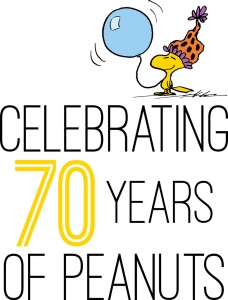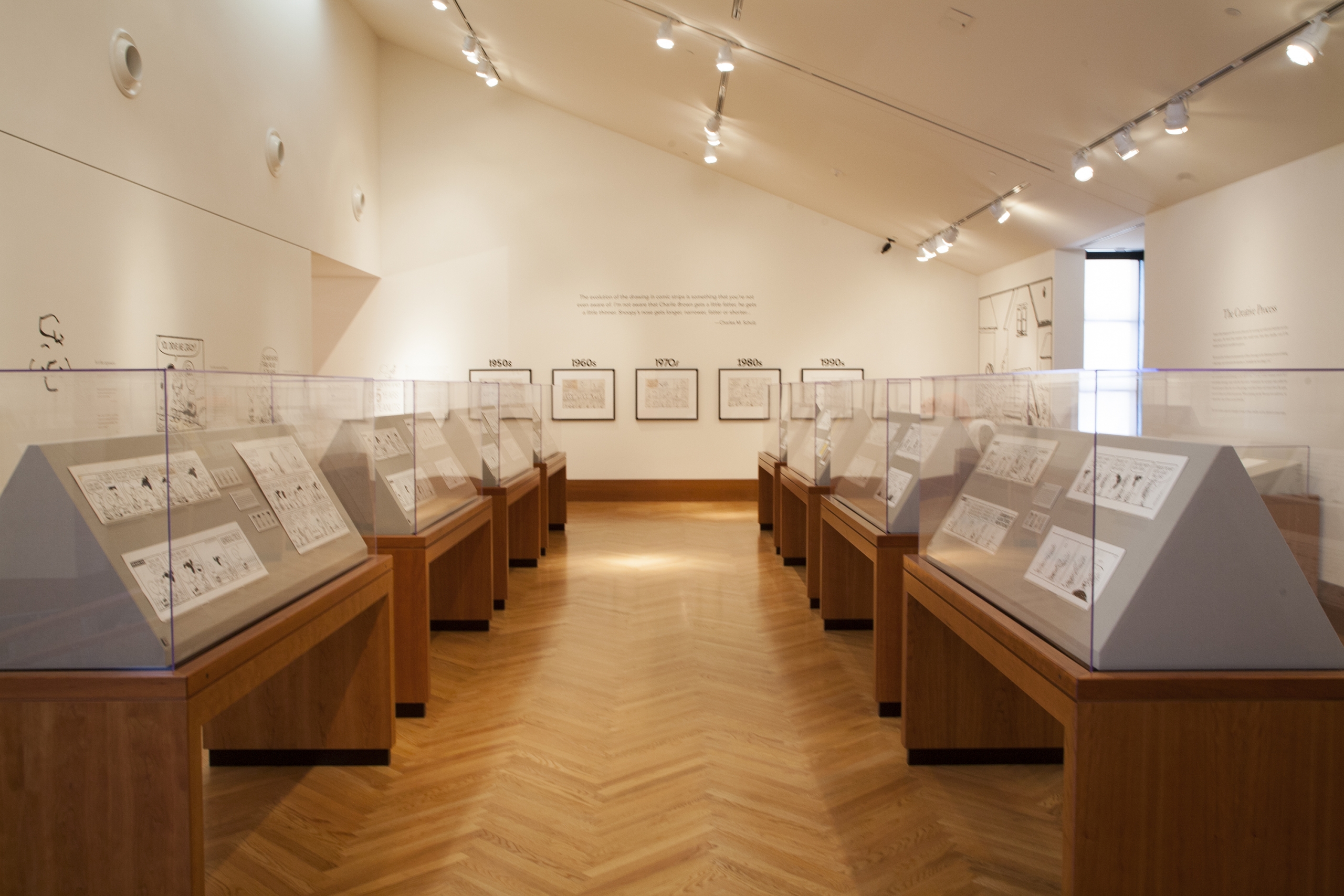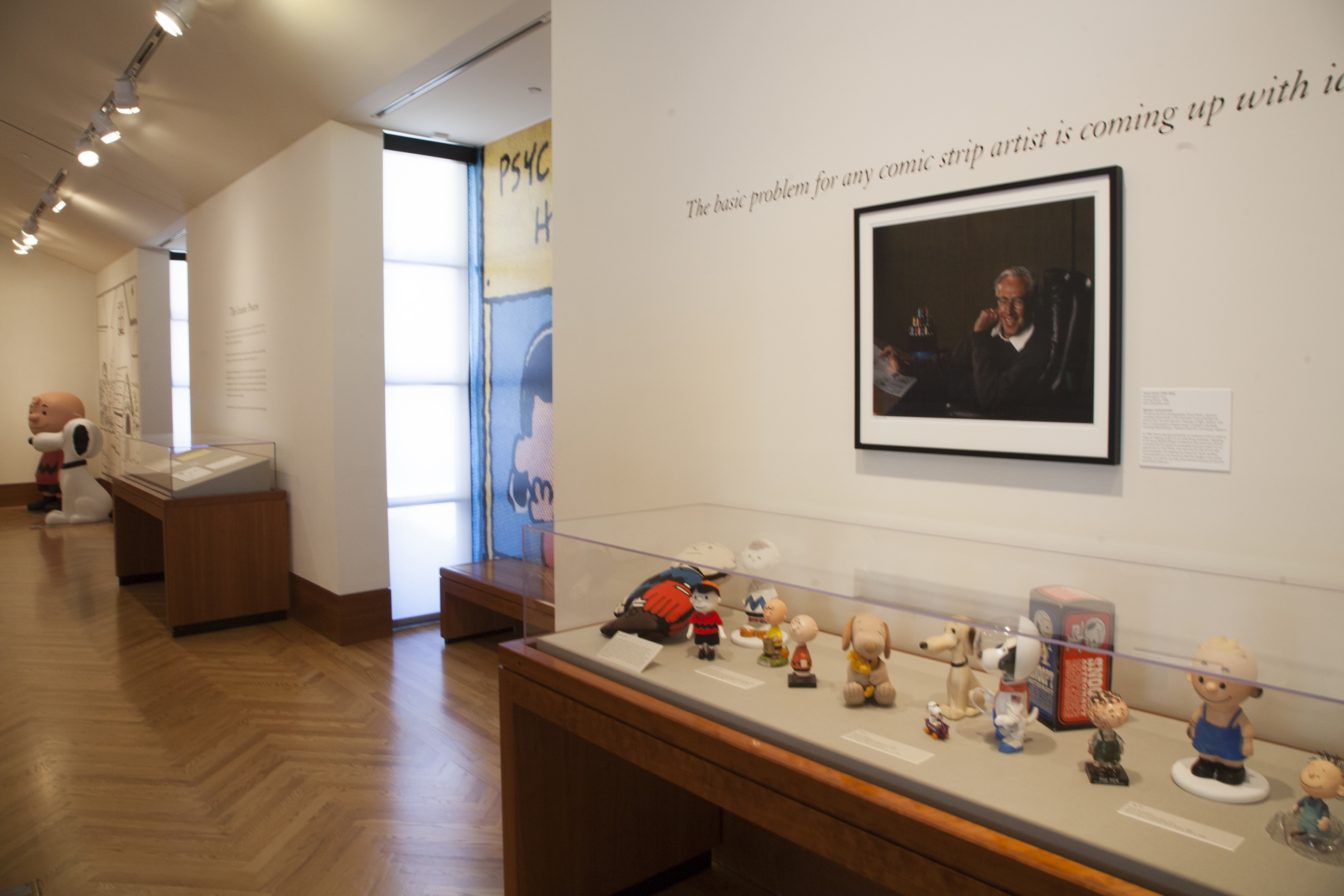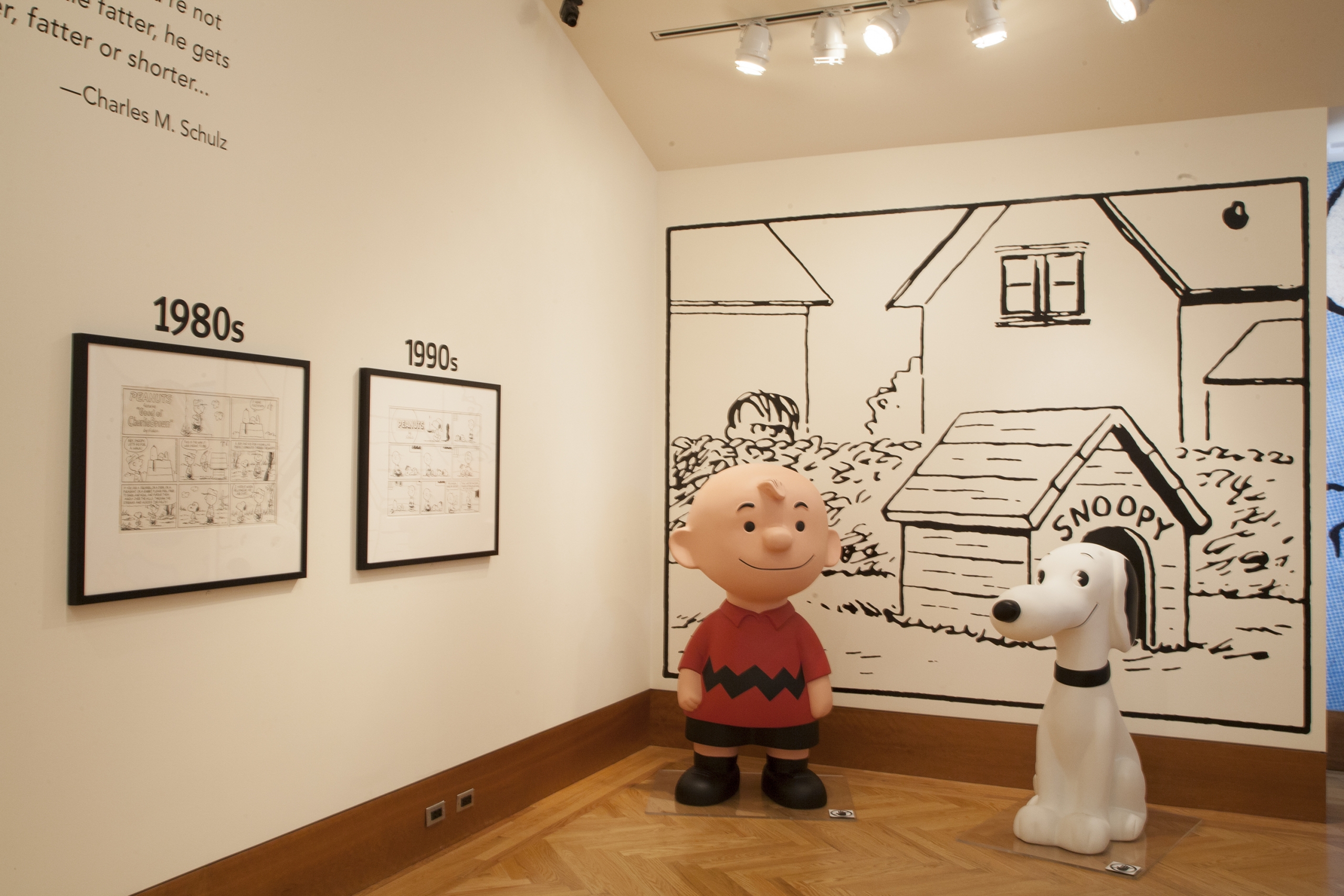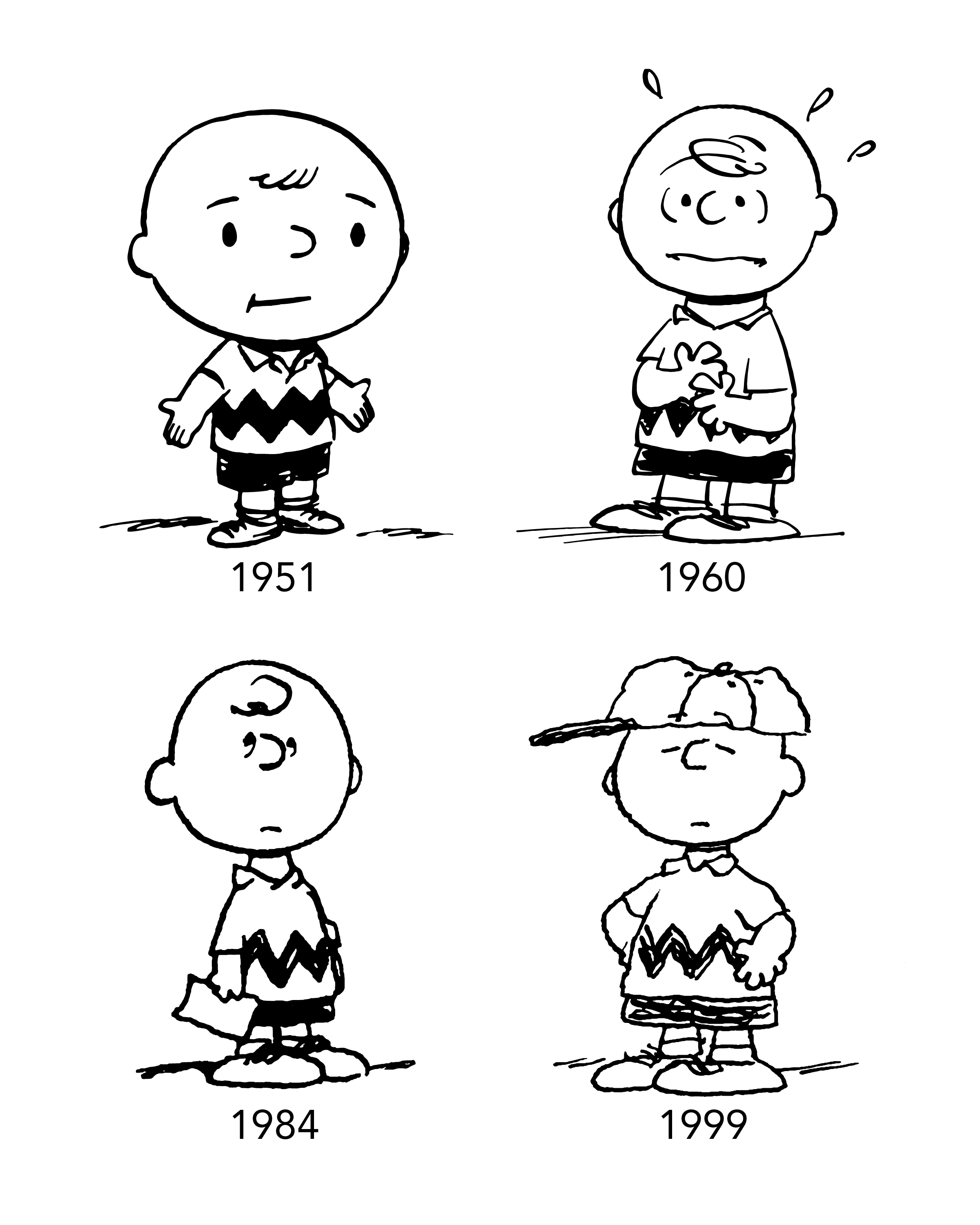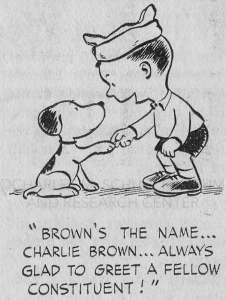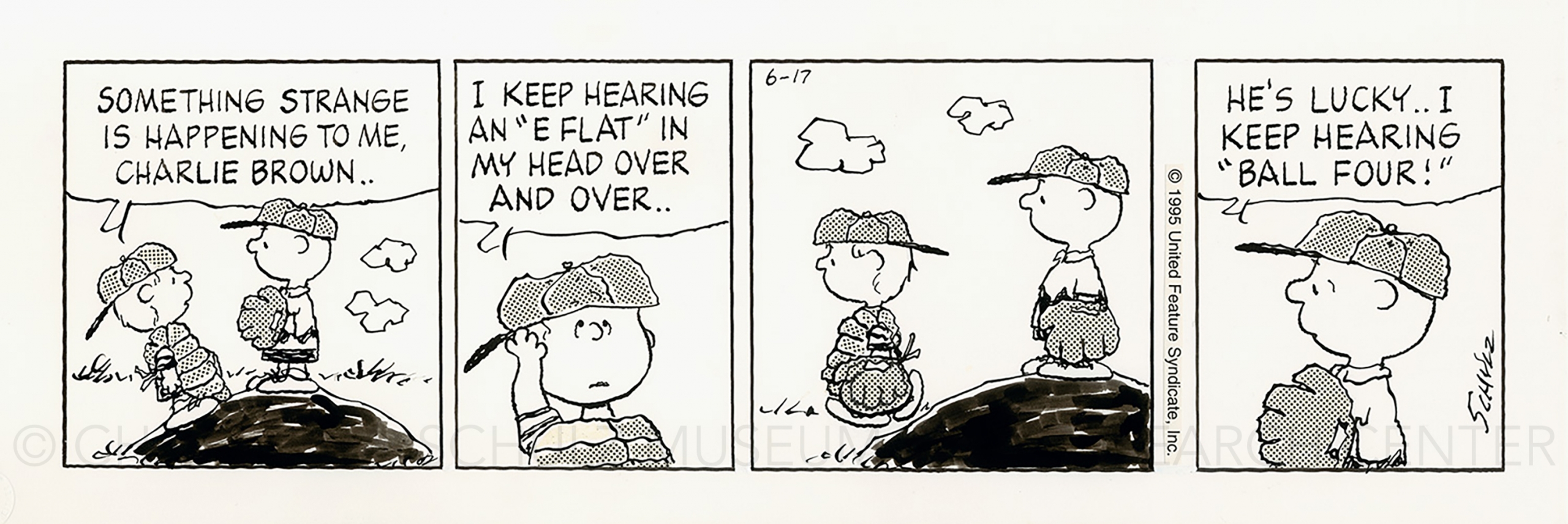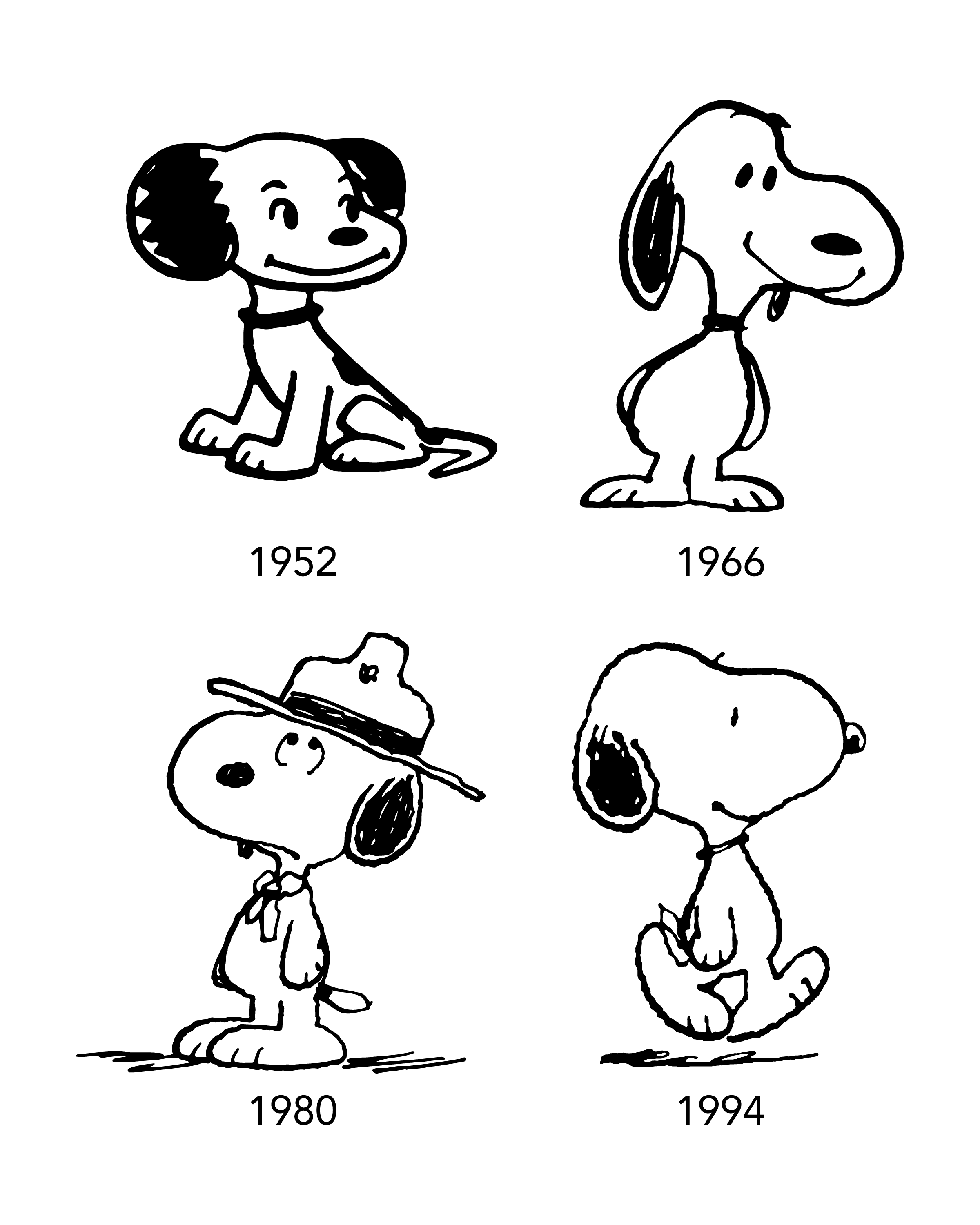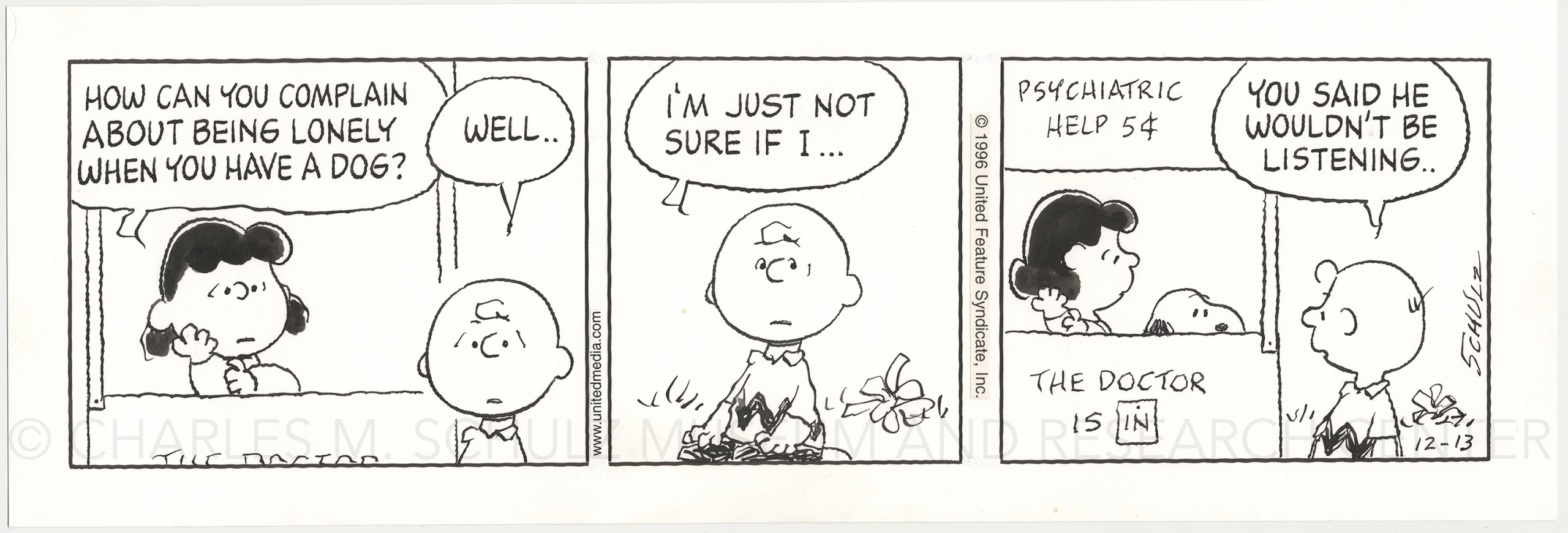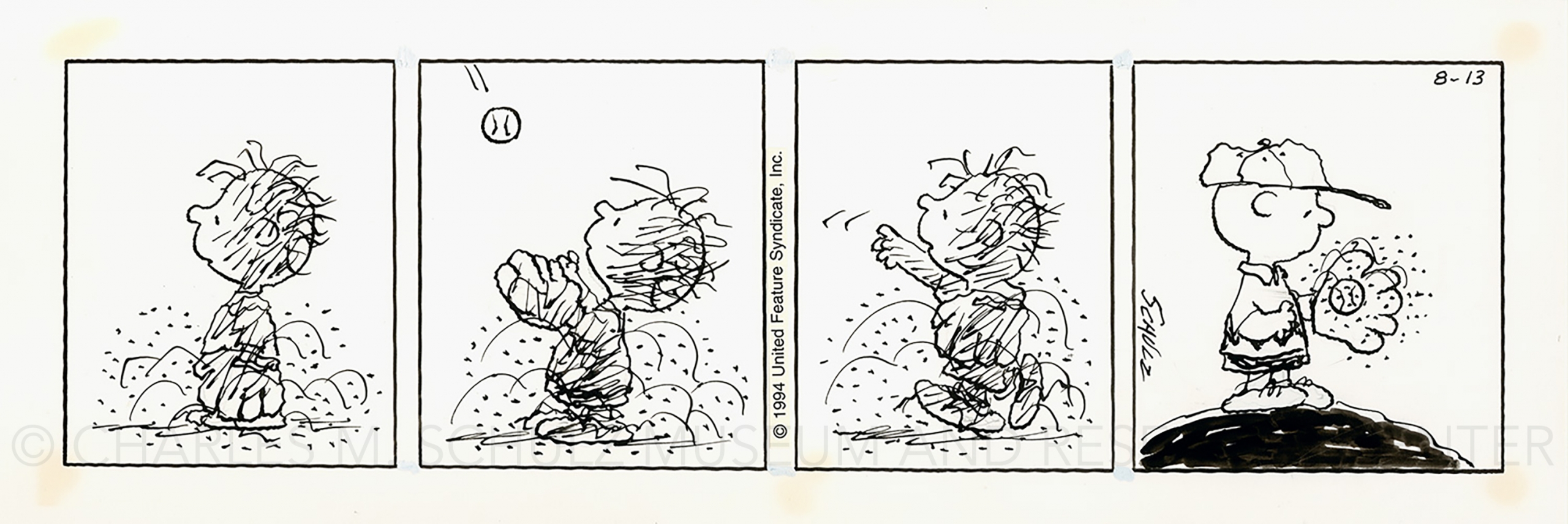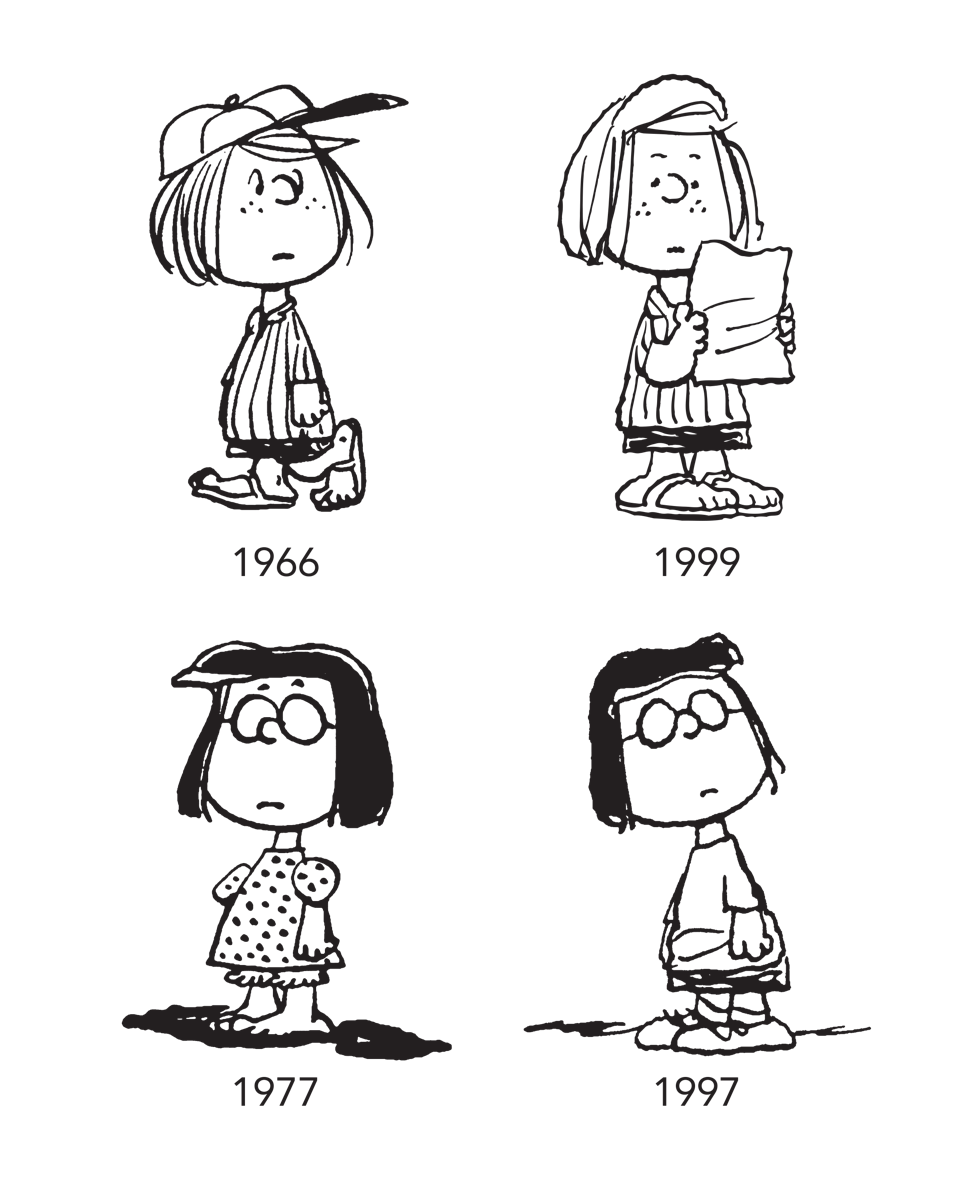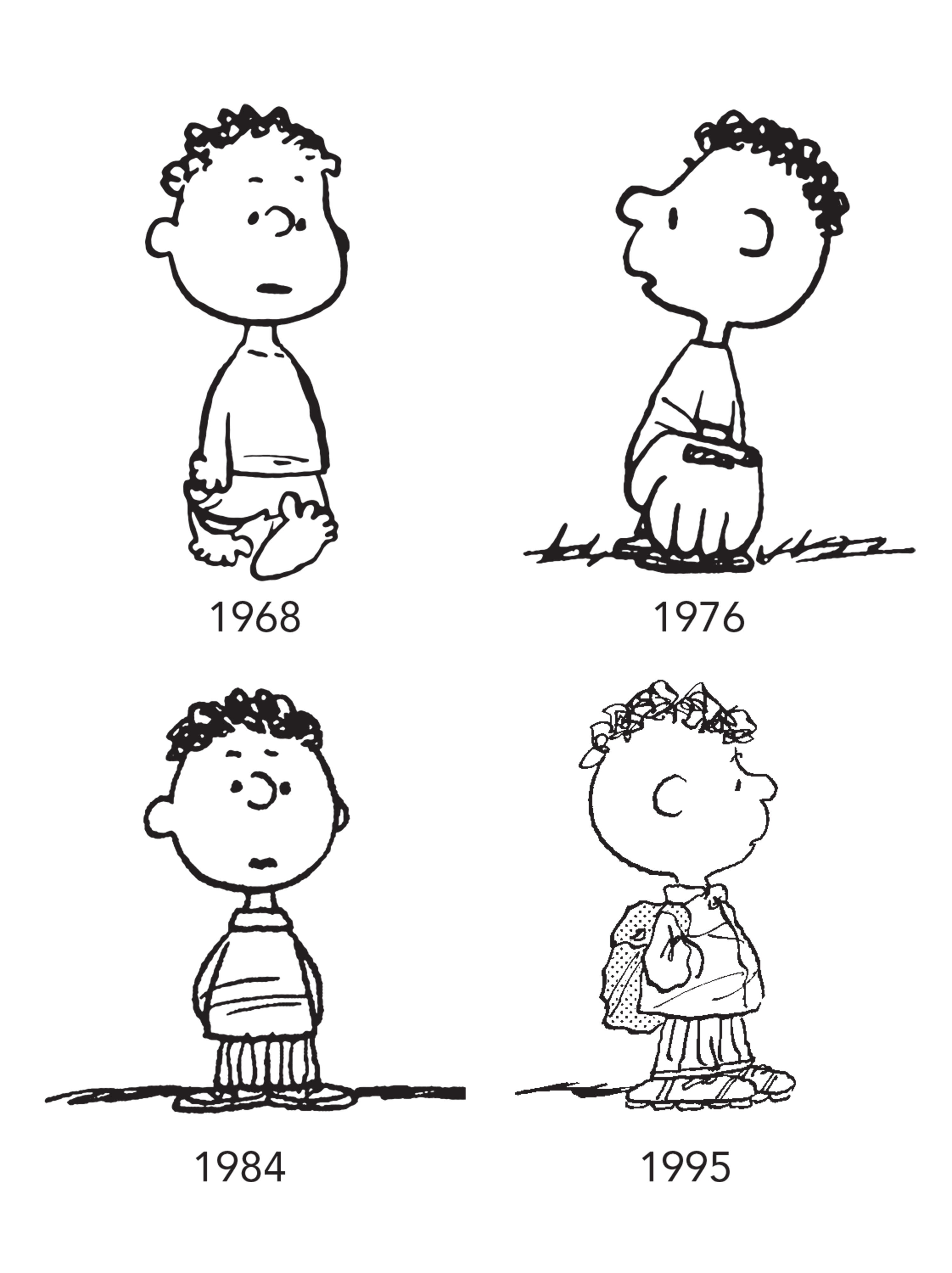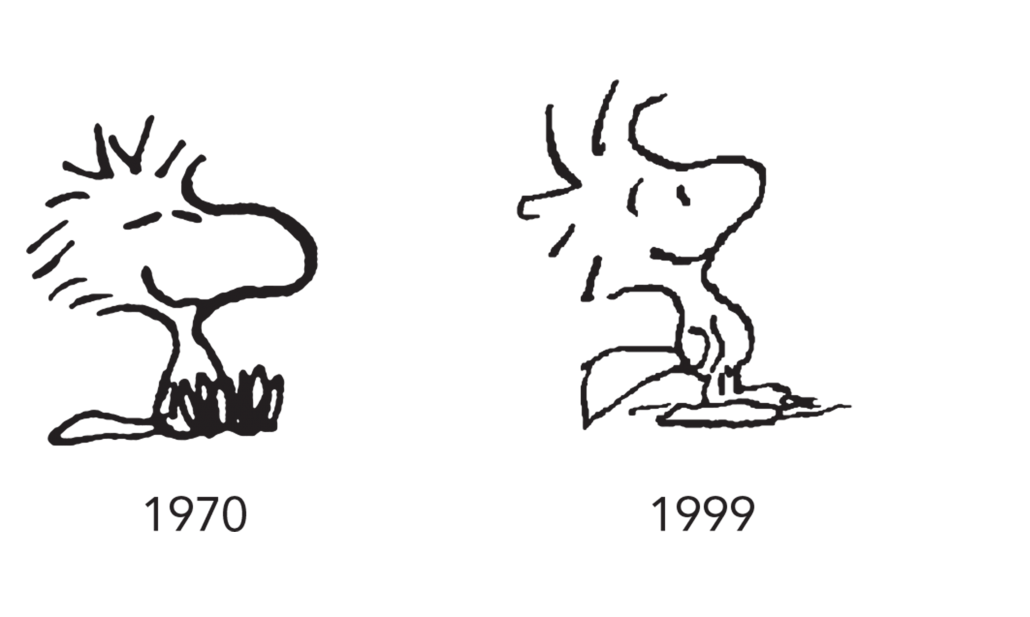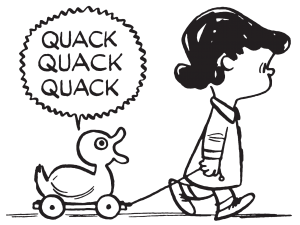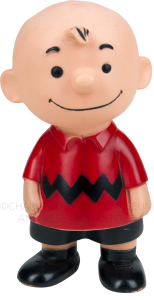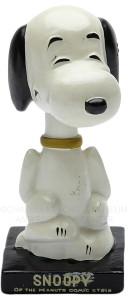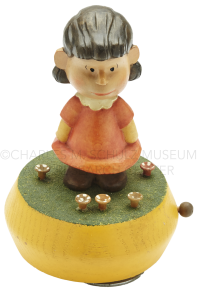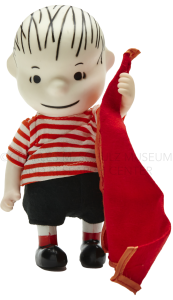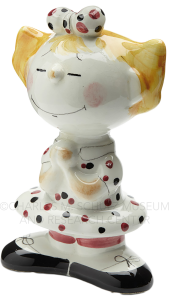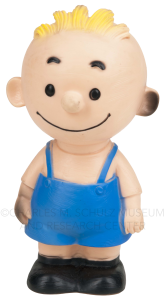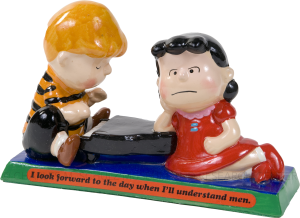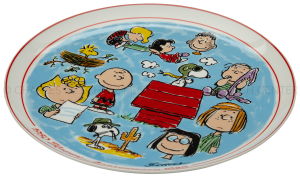70 years ago, Peanuts began publication on October 2, 1950.
Many fans are surprised to learn that the earliest comic strips featured a smart-aleck Charlie Brown absent of his signature zig-zag shirt, and Snoopy as a dog that walked on all fours. In those formative years, Charles M. Schulz applied steady black lines to create sharply drawn characters and compositions, revealing the ambition of a young man who dreamed since childhood of being a cartoonist.
As you view the daily Peanuts comic strips in this exhibition, note the rich detail of early strips contrasted with the minimalism of those published in later years. In his matter-of-fact style, Schulz explained the changes this way:
“The evolution of the drawing in comic strips is something that you’re not even aware of. I’m not aware that Charlie Brown gets a little fatter, he gets a little thinner. Snoopy’s nose gets longer, narrower, fatter or shorter . . .” —Charles M. Schulz

